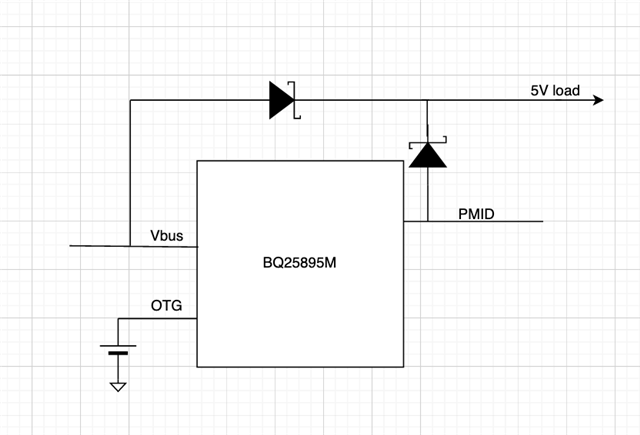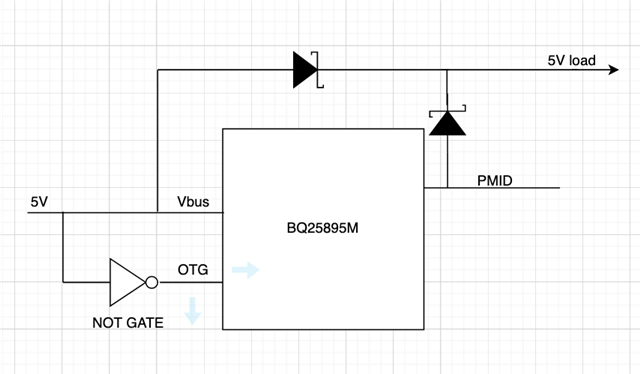Other Parts Discussed in Thread: BQ25620, BQ25622, BQ25611D, BQ25895
Hi,
Let us consider the following supply and load scenario.
| Input Supply | 5V Load | System Load | Backup Battery | |
| Voltage (V) | 5V | 4.5 - 5.5V | 3.45 - 4.25V |
2200mAh, 3.2 - 4.1 V |
| Current | 2 A (Continuous) |
100mA (max) 50mA (typical) |
2A peaks (GSM Module) 300mA typical |
CC: 0.2 - 0.3C - 440 - 660 mA |
| Remarks |
Main supply voltage to Vbus pin. Could turn off. |
PMID output |
Has to be supplied at SYS output (Buck converter) via Input 5V supply or via Backup battery in the absence of Input supply Voltage. |
required to power SYS and PMID in the absence of 5V Input supply. |
For this purpose I have chosen 3 IC and I had a few questions regarding their functionality.
- BQ25895M
- BQ25620/BQ25622
- BQ25611D
Requirements:
1) The SYS output voltage and PMID should be supplied by Input source in the presence of Input source and also charge the battery.
2) In the absence of Input source, the SYS as well as PMID should be provided by the backup battery.
3) IC should be capable of detecting the presence and absence of Input source and automatically Boost the voltage at PMID in the absence of Input source and turn off boost when the Input source comes back.
The questions are as follows,
1) Are all of these IC's capable of Boosting the voltage (OTG functionality) in the absence of Input supply voltage while maintaining the SYS voltage (Buck Converter) at the same time? (The IC should be able to maintain SYS voltage and also Boost voltage with only backup battery as the source.)
2) Is there a automatic detection for the Input source so that the boost mode activation and deactivation is automatic? When the Input source (5V) gets turned off, the IC should automatically detect it and turn on boost mode and when the Input source comes back again, the IC should automatically turn off boost mode and simply connect Vbus to PMID via Power management. Can all the above mentioned IC's do this?
3) Which of the above mentioned IC's would be most suitable for the above mentioned use case with the mentioned requirements?
Thanks and Regards,
Srishtik.





